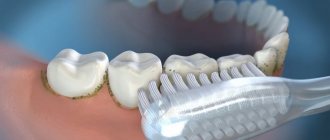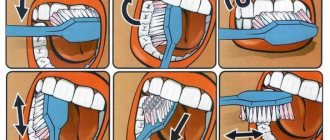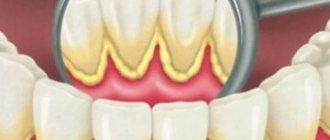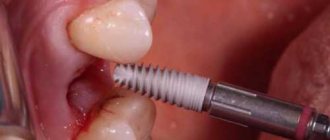August 29, 2020
Today, more and more people understand how important it is to have well-groomed teeth and a beautiful smile, but deposits and color pigment constantly accumulate on the enamel. What to do and how to remove plaque from teeth? There are many professional methods for this, as well as home methods. We will tell you about all their diversity in an article by the editors of the UltraSmile.ru portal.
Plaque on teeth can ruin even the most beautiful smile
Causes of deposits
Before we talk about how to remove plaque on teeth, it is important to understand why it appears there. Indeed, in many ways, knowledge of the causes can help eliminate the problem, prevent it, reduce the amount and intensity of deposits, and slow down the rate of their appearance. We list the main provoking factors:
- poor or lack of oral hygiene: plaque appears in the mouth all the time, mainly due to the food we eat, bacteria and saliva that mineralizes the deposits. But if you skip daily brushing of your teeth, the amount of soft deposits rapidly increases, they harden and can no longer be removed with a brush and paste,
- lack of solid foods, vegetables and fruits in the diet and, conversely, excess of soft and carbohydrate foods,
- smoking and drinking alcohol,
- long-term treatment with medications, especially those containing tetracycline,
- abuse of coffee, tea, red wine, foods with dyes,
- pathologies of internal organs: in particular, gastrointestinal diseases and endocrine disorders,
- incorrect bite, absence and untimely restoration of teeth: a person begins to chew with the part of the jaw where it is more convenient for him. And where there is no load, hard-to-remove plaque accumulates,
- violation of acidity levels and dry mouth,
- the presence of microcracks and chips in the enamel: bacteria, tiny pieces of food become clogged in them, and color pigments from food are eaten away.
Smoking can lead to serious problems.
Plaque is classified according to several criteria. It is distinguished by colors, the main ones: yellow, black, brown. Consistency and hardness: soft microbial, partially mineralized and hard. By location: on the enamel and gums, under the gums. Soft and partially mineralized, they consist of food debris and bacteria, are localized mainly on the enamel - you can try to remove them at home. But the hard one is abundant mineralized deposits that are located at the border of the enamel and gums and often make their way under the gums - you can only get rid of this type in dentistry.
Now we will list all the possible methods that will help remove plaque from teeth. Let's start with those that are usually used in dentistry and gradually move on to those that are practiced at home.
How to remove tartar in dentistry
Tartar is removed in a dental clinic using modern techniques that allow the stone to be completely destroyed. The earlier deposits are detected, the easier it is to remove them.
The procedure takes about an hour in total. First, the doctor removes the supragingival stone, and, if necessary, the subgingival stone. Then the teeth are polished and a fluoride toothpaste is applied.
In their work, dentists usually combine several methods of stone removal. This approach allows you to get the most effective results. Once the problem is eliminated, the risk of complications is significantly reduced.
Professional dental methods
Water-abrasive cleaning Air-Flow
The most effective way to remove plaque from your teeth is to have a doctor help you. How? Using a special Air-Flow device with a small tip, through which a fine abrasive mixed with water enters the oral cavity. The composition washes away soft deposits not only from the surface of the enamel, but also from the most inaccessible areas, from the interdental spaces. During this cleaning process, pigment from food, drinks and smoking is removed from the teeth, so the enamel acquires its natural shade. On average, the enamel becomes lighter by 1-2 tones. In addition, at the end of the procedure, hard tissues are necessarily polished1, and therefore become very smooth and acquire a healthy shine.
Ultrasound Applications
How to remove plaque from teeth? The best way to deal with this is a dentist, since the doctor has a special set of tools that allows you to get rid of any type of deposits. For example, all dentists today are equipped with ultrasonic units, through which low-frequency ultrasonic vibrations enter the oral cavity, crushing hard deposits into small pieces. Ultrasound helps ensure that even the most tightly adhered and thick layer of plaque comes off the enamel. Then the deposits are washed out of the mouth along with water. The result is healthy, clean teeth and gums.
The most common method is ultrasonic removal.
Ultrasound is often used by doctors in combination with Air-Flow, which allows you to remove all types of deposits and thereby increase the effectiveness of cleaning.
Laser cleaning
This is a very good alternative to ultrasound, as it is safer and painless. What are the advantages of laser:
- acts precisely on deposits without affecting or damaging the enamel and gums,
- has a pronounced antiseptic, regenerating and anti-inflammatory effect,
- prevents tissue bleeding.
The photo shows the removal of deposits with a laser.
However, laser cleaning services will cost more than ultrasonic cleaning.
Until recently, methods such as chemical and mechanical were also actively used in dentistry. In the first case, doctors used special agents that literally corroded deposits, but also harmed the enamel. With the mechanical method, plaque is removed manually, which is quite traumatic. The mechanical method is still used today, but only as an auxiliary method.
Curettage for difficult cases
How to remove plaque that has accumulated in large quantities and is firmly lodged under the gums? Typically, this question arises in patients with progressive periodontal diseases, since these pathologies lead to the formation of deep periodontal pockets (the gum moves away from the tooth), where abundant bacterial deposits are deposited.
Patients with such diseases can and should get rid of the problem, which is only possible in dentistry. For these purposes, doctors perform open or closed curettage using hand instruments that have a pointed end. If the periodontal pockets are very deep, then specialists first perform a mini-operation and peel off the gum from the tooth, and after cleaning, return the tissue to its place and apply sutures.
With open curettage, before cleaning. peel off the gums
To be effective, the procedure is combined with ultrasound or laser cleaning, with the treatment of periodontal pockets with Vector or Varius devices.
Enamel whitening
Some patients who have plaque on their teeth are interested in how to remove it in such a way that the smile then becomes snow-white, downright “Hollywood.” To achieve results, doctors can offer different methods of professional whitening - photo whitening (Amazing White, ZOOM, Luma-Arch, Beyond Polus), laser, chemical (Opalescence), cosmetic (Magic White).
To achieve better results, doctors may suggest whitening
Before whitening, it is necessary to prepare the enamel, level its surface and remove bacterial plaque, strengthen it with the help of a professional hygiene complex, which usually includes ultrasonic cleaning, Air-Flow, and fluoridation. Then the whitening compounds will have the maximum possible effect and will not harm, and you will lighten your teeth by 5-12 tones (depending on the chosen method). Otherwise, the resulting color may not be uniform.
Prosthetics
Tetracycline plaque, as in the photo, cannot be cleaned or whitened. It is formed by the destructive effects of tetracycline, which some patients took as part of medications in childhood and adulthood. Or the substance entered the body during fetal development (if a pregnant woman was treated with drugs containing tetracycline).
The photo shows tetracycline teeth
Also, stains on the enamel cannot be cleaned; they are mistakenly mistaken by many patients for plaque, but arise due to severe forms of fluorosis, hypoplasia, erosion, and wedge-shaped defect. In these cases, doctors offer other ways to remove plaque from teeth, or, more correctly, to disguise it. Here the patient can be offered veneers and lumineers, crowns made of various materials (ceramics, metal-ceramics, zirconium dioxide).
Installing veneers will help change the color, shape and size of teeth
Now let's talk about how to remove plaque at home.
Why plaque and stone are dangerous
The plaque that settles on the teeth is soft. It can be easily removed with any hygiene products. Within 6-12 hours it reacts with the components of saliva, becomes saturated with calcium salts and hardens. The only way to prevent this is to use mouthwash throughout the day. Once the plaque has hardened, it can no longer be removed.
Tartar gradually forms. It continues to grow as new layers of plaque easily “stick” to the rough surface. After about 6 months it becomes visually noticeable, but this is not its main danger.
The stone grows in the cervical part of the crown, gradually penetrating into the subgingival area. This leads to mechanical damage to the gums and loosening of the teeth. Microorganisms cause gum inflammation and provoke more severe oral diseases. Patients complain of bleeding and sensitivity of the gums, and bad breath. With further growth of the stone deeper into the gums, there is a risk of developing cysts on the root of the tooth.
Home methods
Tooth pastes
You can deal with soft pigmented deposits at home. For these purposes, many people buy special pastes. What options might there be:
- with abrasives: those that fight plaque and also allow you to slightly lighten the enamel, contain small granules that have a cleansing and polishing effect. The abrasive content must be at least 100-120 RDA. Product options: Lacalut White, Lacalut White & Repair, PresiDENT Smokers for smokers, PresiDENT White, Blend-a-med White Luxe 3D, ROCS PRO Sensational Whitening, SPLAT Special Dream, Colgate Optic White,
- with hydrogen peroxide and urea: they are more preferable, as they give a good and lasting result, but at the same time they damage the enamel less. However, such products are more expensive than abrasive ones. Options: REMBRANDT, SPLAT Special Extreme White, ROCS PRO Oxywhite.
A paste with a high content of abrasive substances will help in the fight against dental plaque.
To get maximum benefit and minimum harm from home methods, you must first prepare the oral cavity for the effects of various compounds. It is recommended to visit a dentist who will first strengthen the enamel, cure existing dental diseases, and advise the most gentle options for solving the problem.
Proper nutrition
How to remove plaque from teeth in the most gentle and natural way possible, so that it does not return for a long time? Introduce solid fruits and vegetables into your diet, which naturally cleanse enamel. Drink more clean water, as it washes away some of the deposits, and a sufficient amount of it in the body contributes to the normal production of saliva, which has protective, antiseptic and cleansing functions.
A proper balanced diet will reduce plaque accumulation
To prevent plaque from forming too quickly, try to limit yourself in consuming foods with dyes: berries, beets, tomatoes, coffee, tea and wine, soda and freshly squeezed juices. To make “colored” drinks have less contact with the enamel, drink them through a straw, and it is better to dilute coffee and tea with milk.
Professional products for home use
We list the most common options:
- dental strips: for example, Crest 3D White, Blend-a-Med 3D White Luxe,
- Whitening pencils: very compact and easy to use. There are a lot of possible options: Luxury White PRO, GLOBAL WHITE, My Brilliant Smile, Dazzling WHITE,
- gels from professional manufacturers that are best used in conjunction with aligners: Zoom Day White and Nite White, TresWhite Supreme from Opalescence,
- special brushes: whitening brushes for effective removal of dirt are offered, for example, by the company ROCS. Ultrasonic and electric brushes are quite effective in combating soft pigmented and partially mineralized deposits.
For whitening, the tray is filled with a special whitening composition.
Before using such products, it is very important to consult a doctor and carefully read the information about contraindications. During use, you must strictly follow the instructions. Otherwise, you may not achieve the stated effect, or you may damage the enamel and cause irritation (burn, rash, swelling and redness) of the gums.
Folk recipes
When you want to remove plaque at home, many people prefer not to buy anything at all, or to limit themselves to completely trivial expenses, focusing on folk recipes. Today, baking soda and salt, hydrogen peroxide, activated carbon, fruits (strawberries and lemon, banana and lemon peels), aloe vera, lemon and tea tree oils are used to remove plaque at home.
Banana peel can be used at home
The listed products are distributed over the tooth enamel in pure and crushed form, added to toothpastes and diluted with water, and combined with each other to enhance the effect.
As practice shows, they help remove soft pigmented plaque, due to which the enamel becomes lighter by 1 tone. However, such products must be used for a long time for the effect to become noticeable, and if used incorrectly, they can lead to increased sensitivity, cracking of the enamel, inflammation and bleeding of the gums.
Strengthening oral hygiene
The daily cleaning procedure should be carried out not only with a brush and paste, but also with floss (dental floss) and an irrigator. It’s good if the kit is taken by a dentist who has examined you and has an idea of the clinical situation in the oral cavity. To prevent plaque from accumulating on your teeth, you should rinse your mouth with water or mouthwash after each snack. However, you need to be very careful when choosing rinses: for example, formulations with chlorhexidine can cause permanent yellow staining of the enamel.
Notice
: Undefined variable: post_id in
/home/c/ch75405/public_html/wp-content/themes/UltraSmile/single-item.php
on line
45 Notice
: Undefined variable: full in
/home/c/ch75405/public_html/wp-content /themes/UltraSmile/single-item.php
on line
46
Rate this article:
( 2 ratings, average: 5.00 out of 5)
plaque
- Pavlenko S.A. Features of dental plaque removal during professional oral hygiene // World of Medicine and Biology. – 2012.
Expert “If you find abundant supragingival plaque in your mouth, pronounced pigment on the teeth, as well as minor subgingival deposits, then this should be a reason to visit the dentist. These problems cannot be dealt with at home. Moreover, using home remedies without a doctor’s prescription can further aggravate the situation, contribute to the development of periodontal diseases, and cause irreversible damage to the enamel.” Dentist-therapist Elena Vladimirovna Orlova
Choosing the right brush is already half the battle
When hard plaque appears on your teeth, you need to approach the choice of brush very responsibly. What parameters should it have?
- Be multi-tufted with rounded edges and man-made fibres.
- Have a small nozzle.
- Have medium hard bristles.
Electric and ultrasonic brushes get good reviews.
Electric brushes make a large number of movements in one minute. With the help of pulsation, partially mineralized plaque is broken up.
Ultrasonic brushes have a specially built-in generator that generates oscillatory ultrasound waves. They can remove small hard deposits.
Comments
I had my teeth cleaned at the dentist for the first time in my life just a few months ago, and today I noticed that there was too much plaque again. How so??
Olga (02.09.2020 at 20:39) Reply to comment
- Dear Olga, the rate of plaque formation can be affected by the presence of chronic diseases, poor oral hygiene, smoking, consumption of “colored” foods and drinks, the presence of gingivitis and periodontitis. Sometimes the cause of the pathology is the unprofessionalism of the doctor, who poorly polished the surface of hard tissues at the final stage of cleaning. You should contact an experienced dental hygienist or dental therapist to understand the situation.
Editorial staff of the portal UltraSmile.ru (09/06/2020 at 09:15) Reply to comment
I have an “extended” tooth, but it has become darker than mine, the doctor explained that a change in color can occur over time. Is it possible, in addition to a crown, to achieve lightening of just such a tooth?
Mira (09.23.2020 at 07:15) Reply to comment
Tell me, if you have crowns in visible places and your own teeth, what is best to use for cleaning? That is, the listed products for home use are also suitable for cleaning crowns. Or is there something simpler for crowns, or vice versa more effective?
Inga (09.23.2020 at 09:00) Reply to comment
Tell me, which method of professional teeth cleaning is the safest and most gentle? And what is the most correct and effective method of home cleaning? I'm afraid of ruining the enamel.
Elena (09/23/2020 at 11:57 am) Reply to comment
We were surprised about the banana peel! I knew about fruit acids. I have increased sensitivity of all my teeth, because my gums have risen, if I express myself correctly, that is, the necks of my teeth have become slightly open. Visually it’s not very noticeable, but there is a reaction to sweet/sour. In my case, there’s probably no way to whiten my teeth at all? Thank you.
Victoria (09/23/2020 at 12:32 pm) Reply to comment
Twice a year I do ultrasonic teeth cleaning. The dentist advised me to buy an electric ultrasonic toothbrush. But I heard that electric brushes destroy teeth. Is it worth buying?
Zlata (11/20/2020 at 6:10 pm) Reply to comment
Hello, can you tell me how often I can do water-abrasive cleaning? If six months have not yet passed since the last procedure, and I am still not satisfied with the cleanliness of my teeth, can I repeat the procedure, or will frequent use harm my teeth?
Irina (11/20/2020 at 6:59 pm) Reply to comment
Doesn’t all this cleaning harm the enamel and make the teeth, although plaque-free, sensitive? I'm afraid to even do regular brushing; I think I could damage my teeth or wear away the enamel.
Sveta (11/20/2020 at 07:41 pm) Reply to comment
I don't smoke, but I still have plaque. I drink a lot of coffee, so they are yellow. I used to brush with baking soda instead of tooth powder. Then they told me that I shouldn’t do this often because it could erase the enamel.
Anna (11/20/2020 at 08:29 pm) Reply to comment
A high-quality paste will help you and it’s expensive, and after one brushing I also clean it with tooth powder. Those. twice a morning, for example. Well, you also don’t need to overdo it with cleaning, so that you don’t have a dry mouth later.
Marina (11/20/2020 at 09:08 pm) Reply to comment
Write your comment Cancel reply
Black plaque on a child’s teeth: treatment
Both pigmented microbial plaque and chromogenic staining of teeth due to the activity of actinomycetes bacteria are removed equally in both children and adults, but there are nuances depending on age. For example, Air-flow can be used no earlier than from 12-15 years of age (at the discretion of a specialist), ultrasonic cleaning can be used from 14 years of age. Therefore, in younger children, removal of dark plaque is carried out only with the help of a polishing brush and paste.
Removing dark plaque from a child (before and after photos) –
The main problem with removing pigment plaque caused by chromogenic staining (deposits of insoluble iron salts) is that usually the black plaque returns within 2-3 weeks. Therefore, you don’t really go to the dentist. And in order to prevent the reappearance of black plaque as much as possible, you need to follow the recommendations from the list below.
Prevention of chromogenic staining –
- solve the problem with drinking water (we already said above that drinking ordinary tap water, as well as water purified by an osmotic filter, increases the risk of stains by 13 times),
- stop taking chewable forms of vitamins,
- if you have bleeding gums, you need to see a dentist and have gingivitis treated,
- if you use pastes with stannous fluoride, switch to pastes with sodium fluoride or amino fluoride,
- use toothpastes that contain pyrophosphates, sodium citrate, polyaspartate, as well as polydone and bromelain (all these components prevent pigments from attaching to tooth enamel),
- use toothpastes with lactoferrin (this glycoprotein has the ability to bind 2 trivalent iron ions per 1 molecule),
- Buy your child an Oral-B electric toothbrush (from 3 years of age).
All this will reduce the risk of black plaque deposits, and thanks to an electric toothbrush, you can also polish your child’s teeth yourself. Here it is necessary to clarify that many models of Oral-B electric toothbrushes are for adults - in some modes they can also be used by children from 4 years old, but under the supervision of adults. By the way, you can read about how lactoferrin prevents the formation of black plaque from insoluble iron salts in an English-language study at this link.











